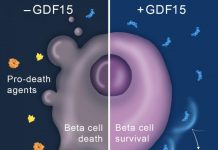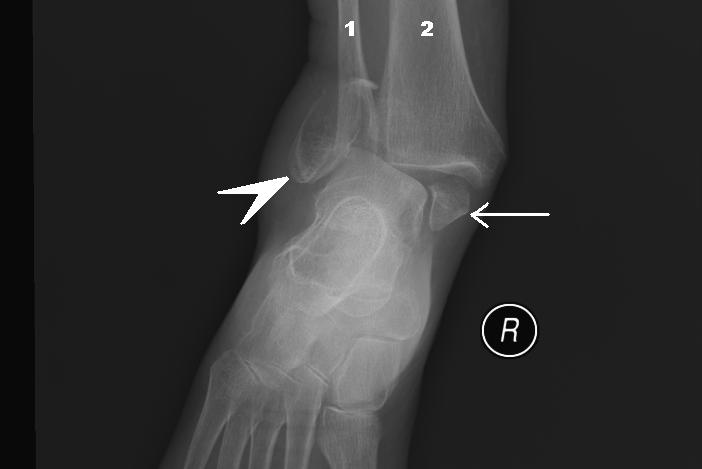JULY 2003 � A new vaccine, based on research at UCLA, has been shown in early human clinical trials to stop the progression of type I diabetes, also known as juvenile diabetes, a condition that affects about one in 300 people, with the average onset age of 12.
The results of the clinical study, conducted by pharmaceutical company Diamyd Medical, were announced June 14 in New Orleans at the American Diabetes Association's 63rd annual Scientific Sessions. The results may lead to a new treatment to prevent type I diabetes -- currently there is no cure.
"It's tremendously satisfying to see our work at UCLA go from the lab to a clinical application with the potential to help so many people" said Daniel Kaufman, a professor in the Department of Molecular and Medical Pharmacology, whose research team first developed and tested the vaccine in diabetes-prone mice.
The prevention of type I diabetes is critical since although affected individuals can lead active lives by injecting insulin daily, long-term complications frequently occur, including kidney and heart disease, nervous system damage, and blindness.
In type I diabetes, the immune system mistakenly attacks and destroys the insulin-producing cells in the pancreas. Over time, this attack leads to a lack of insulin, the hormone that controls blood sugar levels. People with type I diabetes must inject insulin daily.
Continue Reading Below ↓↓↓
Diamyd Medical conducted the phase II clinical trial by vaccinating adults who were recently diagnosed with late-onset type I diabetes. Researchers used a new vaccine, based on a GAD protein vaccine developed at UCLA. After disease onset, type I diabetes patients usually have a little remaining capacity to produce insulin, a capacity that eventually disappears. The new vaccine successfully prolonged these patients' ability to produce insulin over a six-month period, compared with patients who received a placebo.
"The study shows that it is possible to inhibit the autoimmune attack on the cells that make insulin, thereby slowing the progression of type I diabetes," Kaufman said.
Kaufman added that type I diabetes takes years to develop and symptoms only become apparent when the disease is quite advanced -- at the point when most of the insulin-producing cells have been destroyed. This vaccine could inhibit the progression of the disease so that treated children might never develop it, or the onset of the disease might be significantly delayed.
The phase II trial is the first human trial with the GAD vaccine. No side effects were reported. Diamyd Medical is continuing to follow the progress of the vaccinated patients.
"Since the vaccine seemed so effective when given to people with an advanced disease, we are hopeful that it will be highly effective when given at earlier stages of the disease process -- we now know that type I diabetes takes years to develop and that we can detect people who are at early stages of the disease process by testing for GAD autoantibodies in their blood," said Anders Essen-Moller, president and CEO of Diamyd Medical.
ReDiamyd Medical's phase II trial was conducted on 47 diabetes patients with the GAD?based vaccine at the UMAS hospital in Malmoe, Sweden, and St. Gorans Hospital in Stockholm, Sweden. The patients were randomly divided into four groups of approximately 12 patients per group. Each patient received one injection of the vaccine, followed by at least one boost injection four weeks later. Nine patients in every group received the active drug; three received placebo. The groups received different doses of the vaccine, ranging from 4 micrograms to 500 micrograms per dose.
All patients visited the hospitals 10 times during this six-month study. Detailed clinical, immunological and neurological investigations showed no safety concerns at the administered dose levels. The study results show that the diabetes vaccine could significantly protect the patient's ability to secrete insulin, both when fasting and after meals.
The GAD vaccine originated at UCLA from an unexpected convergence of studies in neurobiology and immunology. In the late 1980s, the laboratory of Dr. Allan Tobin, who now directs the UCLA Brain Research Institute, was involved in isolating genes that were thought to be important in brain development and neurological diseases.
Working with Tobin, graduate students Kaufman and Mark Erlander isolated the gene that makes a protein called "GAD," which creates an important neurotransmitter in the brain. At that time, it was known that although GAD was made primarily in the brain, it was also made in the pancreas in the cells that secreted insulin.
Several years later, Kaufman and Tobin realized that the autoimmune response that causes type I diabetes may be due to the immune system attacking the GAD protein in the insulin-producing cells in the pancreas. With this knowledge, they developed a GAD diagnostic test for identifying individuals who were developing type I diabetes based on antibodies in their blood that recognized GAD.
Continue Reading Below ↓↓↓
Kaufman, in his own laboratory at the UCLA Department of Molecular and Medical Pharmacology, along with Dr. Jide Tian, of the same department, searched for ways to help the immune system tolerate the GAD protein, which would circumvent or inhibit the autoimmune attack.
The team reported in the journal Nature in 1993 that when young, diabetes-prone mice were treated with a small amount of the GAD protein, their immune systems learned to tolerate the protein. The autoimmune response that leads to type I diabetes never developed in these mice as they grew older.
Lease URL, if available: In another study published by Nature-Medicine in 1996, the UCLA team developed the GAD vaccine to inhibit the autoimmune response after it had already begun to attack the insulin?producing cells. Kaufman and Tian showed that even after the type I diabetes disease process had started in diabetes-prone mice, its progression could be inhibited by the GAD vaccine.
According to Tian, the GAD vaccine activated T-cells (a type of white blood cell or immune defense cell) that recognized GAD. The T-cells traveled to the pancreas and, recognizing the GAD protein, released calming substances called "anti-inflammatory" cytokines, which suppressed the immune cells that were killing the insulin-producing cells.
"The beauty of this vaccine is that it just affected one small part of the immune system -- without broadly inhibiting the function of the entire immune system," Tian said.
With this proof-of-principle in mice, UCLA licensed the technology to Diamyd Medical for clinical development.
Source: University of California











